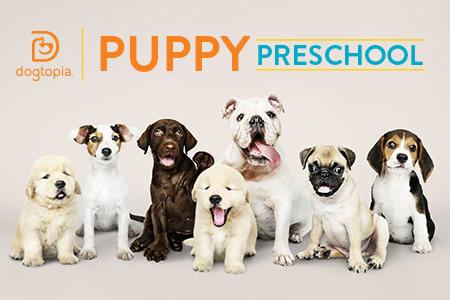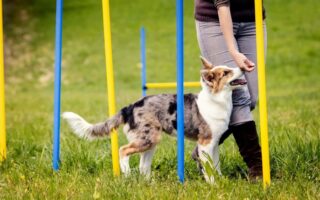In a world bustling with responsibilities and the ever-present hum of daily life, the joy of a puppy’s playful spirit can offer a refreshing respite. But before these furry bundles of energy can frolic freely in backyards and parks, there lies an essential stepping stone on their journey to becoming well-mannered companions: puppy preschool. Much like human children benefit from early education, puppies thrive in structured environments that nurture their development, socialization, and training during critical formative weeks. In this article, we will explore the significance of puppy preschool, what to expect from these formative experiences, and how they lay the groundwork for a harmonious life filled with love and understanding between puppy and owner. Join us as we delve into this delightful world where curiosity meets structure, and paws take their first steps towards becoming the best friends you’ve always dreamed of.
Table of Contents
- The Importance of Early Socialization for Your Puppy
- Tailored Training Techniques for Different Breeds
- Creating a Positive Learning Environment at Home
- Essential Skills Every Puppy Should Master in Preschool
- Q&A
- Key Takeaways
The Importance of Early Socialization for Your Puppy
Early socialization is crucial in laying the groundwork for your puppy’s future interactions with the world around them. During the critical developmental phase, typically between 3 and 14 weeks of age, puppies are especially receptive to new experiences, sounds, smells, and sights. This period is when they form their foundational behavior patterns, and it is essential to expose them to a diverse set of stimuli. Consider the following benefits of early socialization:
- Reduces Fearfulness: Puppies that are socialized early are less likely to develop fears and phobias as adults.
- Enhances Problem-Solving: Exposure to new environments helps puppies learn how to think critically and adapt.
- Improves Confidence: Positive experiences with other dogs and people build a puppy’s self-assurance.
Moreover, structured activities, such as those offered in puppy preschool, facilitate this socialization process. Puppy preschools provide a controlled environment where young canines interact with their peers under the guidance of trained professionals. Through games and supervised playtime, puppies learn valuable social cues, such as bite inhibition and appropriate play behaviors. Here’s a quick comparison of activities typically found in puppy preschool:
| Activity | Benefit |
|---|---|
| Group Play Sessions | Encourages social interaction and teamwork. |
| Obstacle Courses | Boosts confidence and navigational skills. |
| Introduction to New Sounds and Scents | Reduces anxiety towards unfamiliar stimuli. |
Tailored Training Techniques for Different Breeds
When it comes to training puppies, recognizing the unique traits and temperaments of different breeds is key. Some breeds, like the Border Collie and German Shepherd, are known for their high energy and intelligence, requiring more vigorous training methods and mental stimulation. These puppies thrive in environments that offer interactive games and problem-solving activities. On the other hand, breeds such as the Bulldog and Basset Hound tend to be more laid-back and may respond better to gentle encouragement and positive reinforcement techniques that focus on reward rather than intensity. Understanding these distinctions allows trainers to create customized training approaches that cater to each puppy’s innate behaviors.
To illustrate the differences in training techniques, consider the following table of popular breeds and their ideal training styles:
| Breed | Ideal Training Technique | Recommended Activities |
|---|---|---|
| Border Collie | High Energy, Engaging |
|
| Bulldog | Patient, Gentle |
|
| German Shepherd | Structured, Command-based |
|
| Basset Hound | Calm, Encouraging |
|
By tailoring training methods to suit each breed, owners can not only foster a deeper connection with their puppies but also equip them with essential social skills and obedience. This tailored approach ensures that training is enjoyable for both the puppy and the owner, leading to a harmonious relationship as they grow together.
Creating a Positive Learning Environment at Home
Establishing a nurturing atmosphere for your puppy preschool can be transformative, helping both you and your furry friend flourish. To start, consider creating a designated learning space that is safe and comfortable. This area should be free of distractions, allowing your puppy to focus on their lessons. You can include the following elements:
- Soft bedding: Provide a cozy spot where your puppy can relax after learning.
- Toys: Use a variety of toys that promote exploration and learning.
- Visual aids: Incorporate colorful posters or images to keep your puppy engaged.
- Comfortable seating: Ensure you have a good spot to sit and guide your puppy through activities.
Engagement is key to a positive preschool experience. Try to customize your approach based on your puppy’s unique personality and learning style. A responsive method fosters trust and enthusiasm toward learning. To make training more engaging, you might find it helpful to implement a reward system. Consider the following simple table to track progress:
| Skill | Reward Method | Notes |
|---|---|---|
| Paw Shake | Small Treats | Needs reinforcement once a day |
| Roll Over | Praise & Affection | Best learned during playtime |
| Come When Called | Interactive Play | Increase distance gradually |
Essential Skills Every Puppy Should Master in Preschool
During puppy preschool, it’s crucial for pups to acquire foundational skills that will empower them in their future endeavors as well-adjusted companions. One of the primary skills is socialization. Interacting with various people, animals, and environments helps them develop confidence and reduces the likelihood of behavioral issues later on. This includes learning to greet new friends politely, understanding personal space, and adapting to different sounds and sights. To facilitate effective socialization, puppy classes often incorporate controlled play sessions that allow pups to practice these interactions in a safe setting.
Another essential skill is basic obedience. Teaching commands such as sit, stay, come, and leave it not only establishes a line of communication between the puppy and the owner but also promotes safety and good manners. Consistency in training is key; using positive reinforcement techniques like treats and praise encourages pups to respond eagerly to commands. Many puppy preschools also introduce fun agility exercises to help with focus and control, ensuring that learning is both effective and enjoyable. Here’s a quick overview of important commands often taught:
| Command | Purpose |
|---|---|
| Sit | Initiates calmness and control. |
| Stay | Teaches impulse control and patience. |
| Come | Ensures safety and return when called. |
| Leave it | Prevents unwanted behaviors and protects from hazards. |
Q&A
Q&A on Puppy Preschool: An Insightful Guide for New Pet Owners
Q1: What is puppy preschool?
A: Puppy preschool is a specialized early training program designed for young dogs, typically between 8 weeks and 16 weeks old. The curriculum focuses on socialization, basic obedience commands, and essential skills that will help your pup grow into a well-adjusted adult dog. It often incorporates playtime, allowing pups to interact with their peers in a safe environment.
Q2: Why is socialization important for puppies?
A: Socialization is critical during the first few months of a puppy’s life, a period known as the sensitive period for socialization. Introducing puppies to various people, situations, and other animals helps them to develop confidence and prevents behavior problems later on. A well-socialized puppy is more likely to be calm and adaptable, even in unfamiliar settings.
Q3: What should I expect during puppy preschool classes?
A: Expect a lively atmosphere filled with wagging tails and eager barks! Classes typically include structured activities that promote learning through play. You can anticipate engaging exercises such as basic commands (sit, stay, come), leash manners, and fun games that encourage interaction with other dogs. Additionally, trainers often offer guidance on handling common puppy challenges.
Q4: How do I choose the right puppy preschool?
A: When selecting a puppy preschool, look for accredited trainers with experience in animal behavior. Visit potential schools to observe classes firsthand, ensuring the environment is clean and safe. Ask about their training methods—positive reinforcement is widely recommended—as well as class size, curriculum, and the socialization opportunities provided.
Q5: Can I take my puppy to preschool if they haven’t completed their vaccinations?
A: This is a common concern among puppy owners. While vaccinations are crucial for protecting your pup’s health, many preschools implement measures to ensure a safe environment. Some may require proof of vaccinations, while others encourage early socialization with controlled exposure. Always consult your veterinarian for personalized advice about your puppy’s vaccination status before enrolling.
Q6: What are some benefits of attending puppy preschool?
A: The benefits are multifaceted! Puppy preschool enhances your dog’s social skills, improves responsiveness to commands, and builds a strong bond between you and your puppy. Additionally, it equips you with essential training techniques that promote good behavior throughout your dog’s life, ultimately leading to a more harmonious human-animal relationship.
Q7: Are there any drawbacks to puppy preschool?
A: While there are many advantages, some potential drawbacks include the risk of overcrowding in classes, which may limit individualized attention. It’s also essential to ensure that the training philosophy aligns with your own beliefs about dog handling. Lastly, some puppies might find the environment overwhelming; if so, consult with the trainer for alternative approaches.
Q8: How can I continue my puppy’s education after preschool?
A: The learning journey doesn’t end with puppy preschool! Continue building on the skills learned by engaging in regular training sessions at home and seeking out advanced obedience classes or canine sports. Daily exercise, mental stimulation, and socialization activities, such as dog parks or playdates, will also reinforce your puppy’s development and help them thrive.
Q9: At what age should my puppy start preschool?
A: Most experts recommend enrolling your puppy in preschool between 8 and 16 weeks of age. This timeframe is ideal for maximizing their socialization potential and learning foundational skills. However, it’s never too late to start training, so if your puppy is older, consider finding a school tailored to their age and experience level.
Q10: Can puppy preschool help with specific behavioral issues?
A: Yes! Puppy preschool can address various behavioral challenges, such as excessive barking, fearfulness, and jumping. Experienced trainers can provide personalized guidance to mitigate these issues while also helping you understand your puppy’s behavior more deeply. Early intervention is key to managing and correcting unwanted behaviors effectively.
With this comprehensive Q&A, new puppy owners can embark on their training journey equipped with the knowledge needed to nurture their furry friends into well-behaved and sociable companions!
Key Takeaways
In wrapping up our exploration of puppy preschool, it’s clear that this innovative approach to canine education is more than just a series of classes; it’s a pivotal step in a dog’s journey towards becoming a well-rounded companion. As we’ve discussed, the benefits of early socialization, positive reinforcement training, and play-based learning not only bolster a puppy’s skills but also strengthen the bond between pet and owner.
In the vibrant, bustling world of puppy preschool, young pups encounter new experiences, forge friendships, and learn the essentials that will set the tone for a lifetime of happy, healthy interactions. As you embark on this adventure with your canine companion, remember that each wag, bark, and bound is part of the learning curve. Embrace the journey with patience and joy, nurturing their quirks and capabilities alike.
So, whether you’re considering enrolling your fluffy friend in a puppy preschool or simply curious about the concept, know that this early investment in their education can make all the difference. With the right guidance and a sprinkle of love, you’ll be well on your way to raising a well-mannered dog who thrives in any environment. Here’s to the delightful beginnings of a lifelong friendship—one paw at a time!



